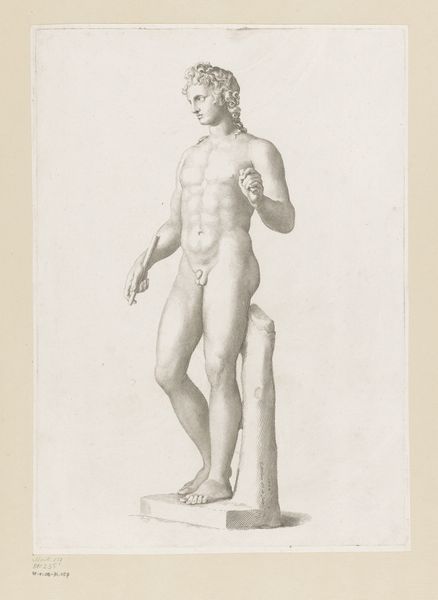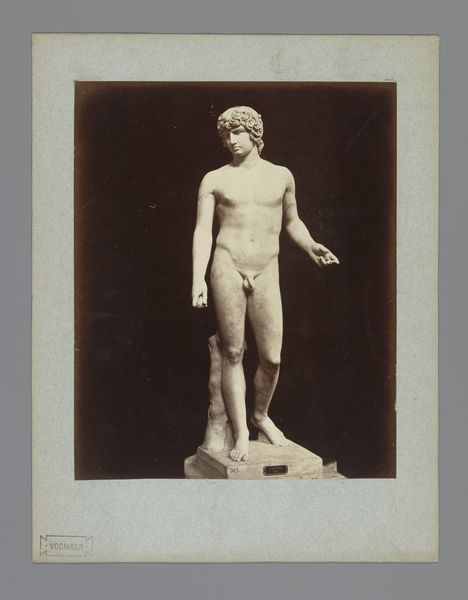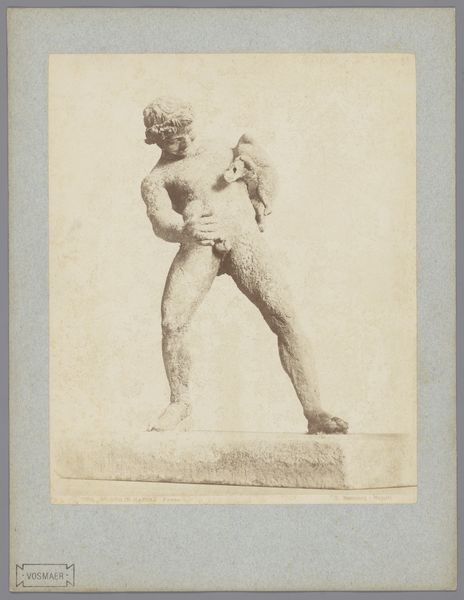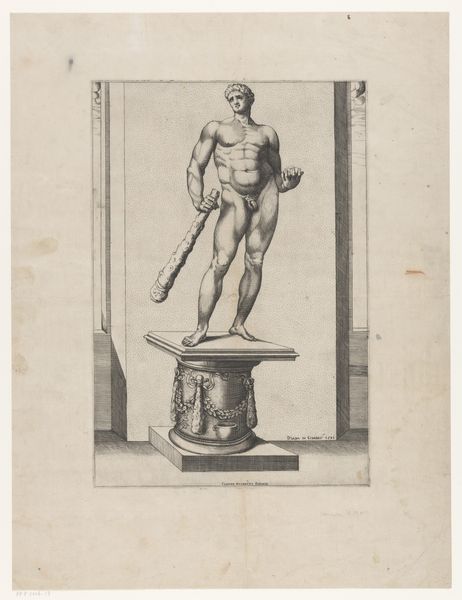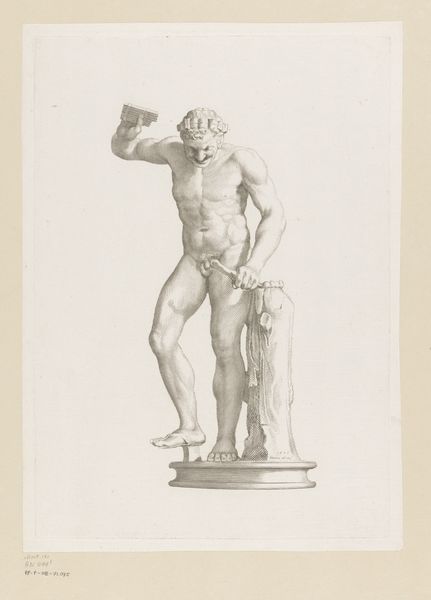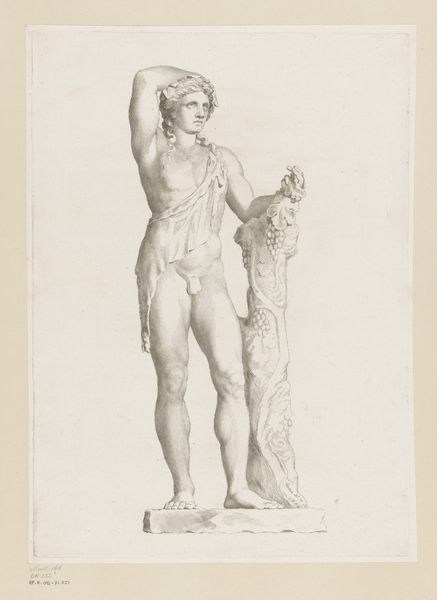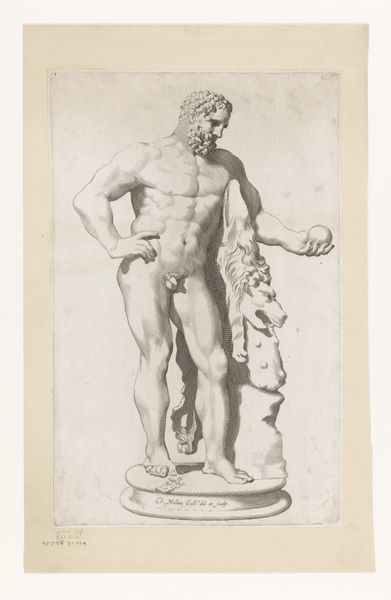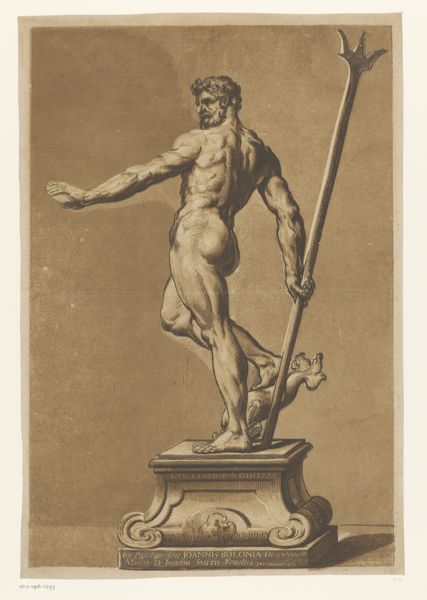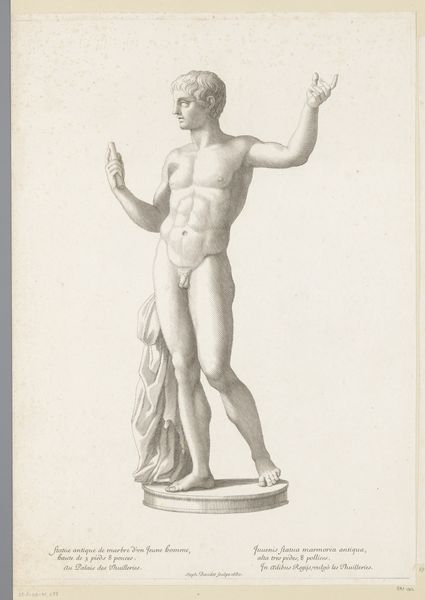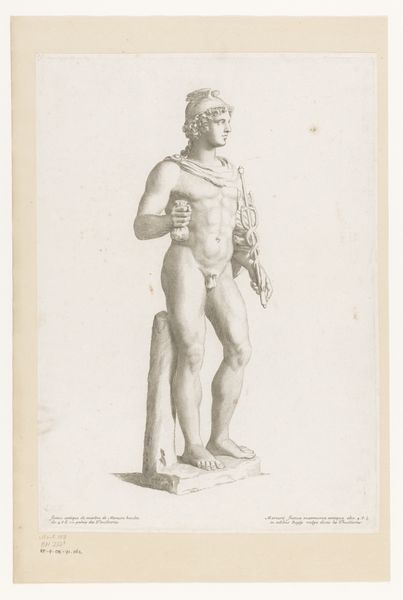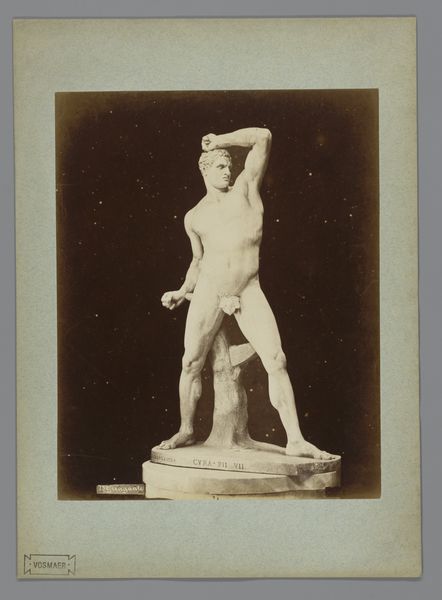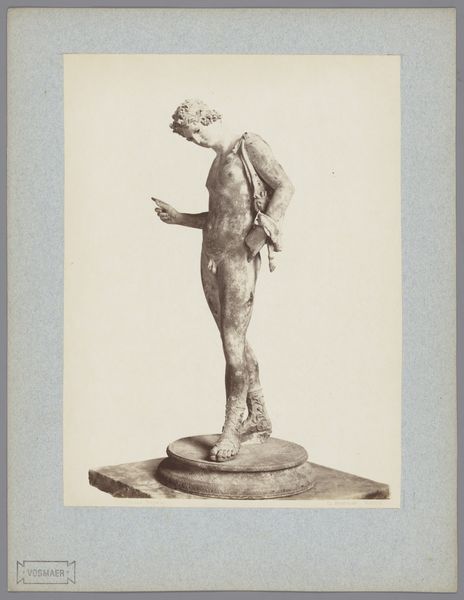
Dimensions: height 377 mm, width 273 mm
Copyright: Rijks Museum: Open Domain
This sculpture, called "Apoxyomenos," thought to be made by Lysippus in ancient Greece, captures a moment of everyday life. The figure you see here is that of an athlete scraping oil and dust from his body after exercise, a common practice in the ancient world. In a society where male athleticism was celebrated, and the male nude was an ideal form, this sculpture speaks volumes about cultural values and identity. But let's think about this idealized form for a moment. Who was excluded from this vision of perfection? Were there other bodies, other stories, left unrepresented? What did it mean to embody this ideal, and what were the consequences for those who didn't fit? Looking at "Apoxyomenos," we can explore questions of representation, power, and identity, and consider how these themes resonate across time.
Comments
No comments
Be the first to comment and join the conversation on the ultimate creative platform.
